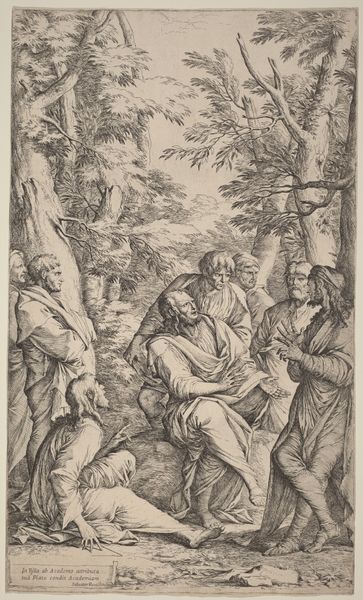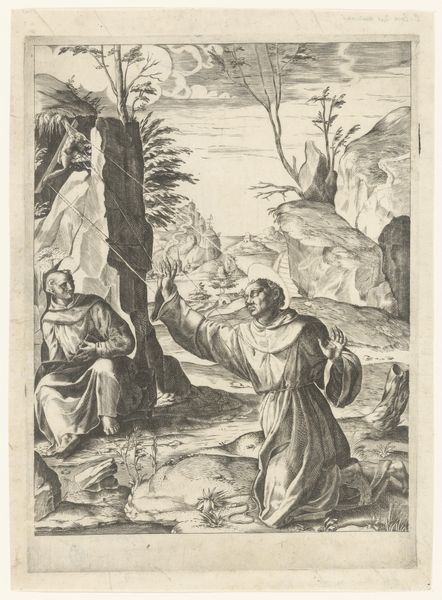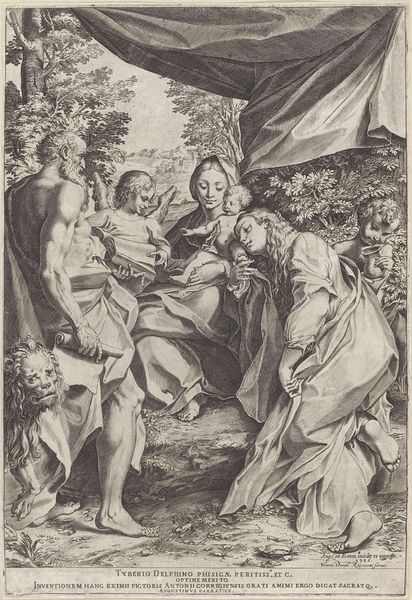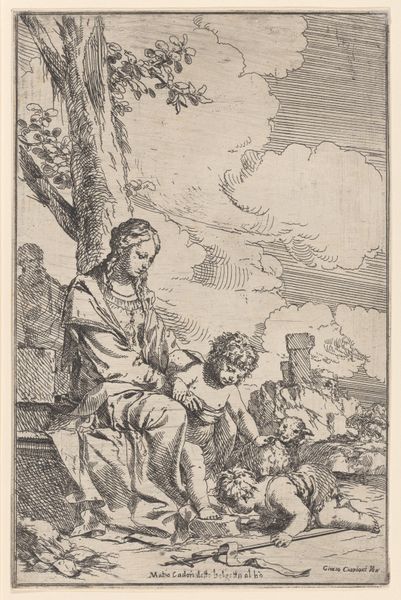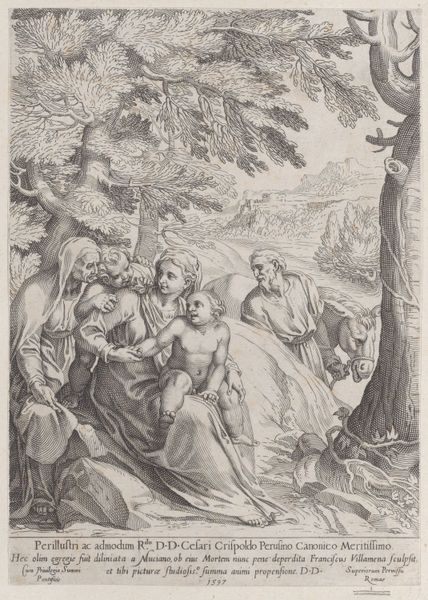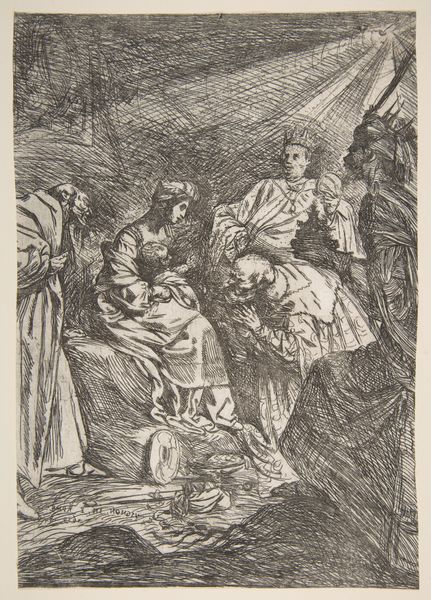
print, engraving
#
narrative-art
#
baroque
# print
#
landscape
#
figuration
#
group-portraits
#
history-painting
#
engraving
Dimensions: height 134 mm, width 110 mm
Copyright: Rijks Museum: Open Domain
Curator: The atmosphere in this print, executed in 1643 by Pieter Nolpe, is rather somber, don’t you think? The crosshatching and heavy lines convey a sense of dramatic intensity, especially given that it's labeled, “Majombe spreekt Pretioze moed in.” Editor: I find it captivating! The narrative element strikes me, certainly. I feel the artist uses this rather classical language to invite discourse around cultural values that reflect broader themes of courage, perhaps linked to gendered notions, as reflected in its title. Curator: Yes, and the composition guides us precisely to such virtues. The visual weight of the tree anchoring the upper left juxtaposes this huddle of figures conferring in its shadow. And the woman who appears to be Pretioze stands centrally, gesturing in what appears to be a persuasive way with raised hands. It's interesting how the other characters’ fashion, whether draped or feathered, and their postured stances—contemplative, attentive, supportive—reflect inner states. Editor: I see the group dynamic you describe—an exchange of values. Do you think it could also be rooted in allegories of resilience? If we think symbolically, then the tree, often interpreted as a sign of strength, would serve as a beacon and would further elevate such discourse about ethics. Curator: Absolutely, it works on several levels! The distant building, on what I presume is meant to be a height, might echo a potential home or fortress, where courage is vital for societal protection. As you highlighted, we perceive these ethical foundations being instilled during historical or social strife. But tell me, what impact does this medium – the printed engraving – have, on your reception of these symbols? Editor: Print is potent because of accessibility: visually accessible in terms of clarity—as can be noted in the precise articulation of lines and shaded areas—and accessible in that it lends itself to democratic circulation! Pieter Nolpe ensures his scene of virtue becomes widely accessible for dissemination and hopefully, emulation! Curator: You’re right; by harnessing that wide dispersal the print's thematic considerations around power are thus emboldened and reach varied populations! What final thoughts might you offer our listeners to reflect on, once they journey away? Editor: I'd hope they leave contemplating the roles symbols play, not only to immortalize critical virtues through images but also in creating space to question why they remain pivotal throughout history! Curator: A fantastic provocation; and I'd add to ponder: what kind of societal contexts can trigger similar needs to communicate communal strength? Perhaps the dialogue around societal and personal fortitude will continue long after we all exit this room!
Comments
No comments
Be the first to comment and join the conversation on the ultimate creative platform.
